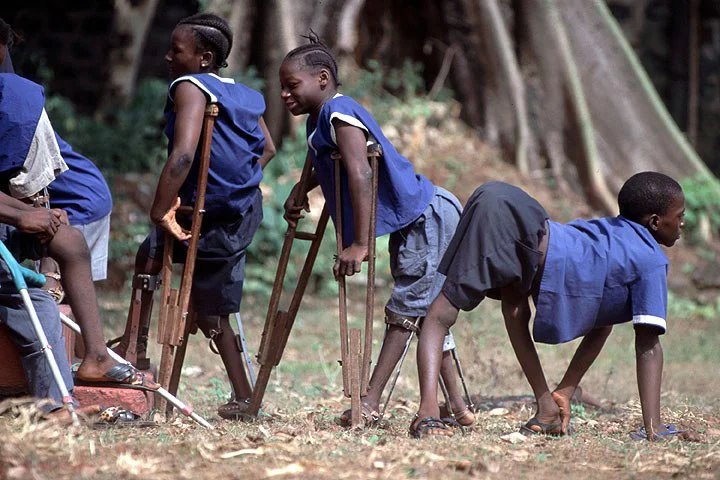Consider a parent in the 1950s who one day saw their child running around, and the next day saw that same child unable to move their legs. In the past, this tragic scene was widespread. The reason? Poliomyelitis, also known as polio, is a highly contagious virus that can cause paralysis and even death.
It’s a good thing that many people today have never seen a case of polio. However, a decades-long global struggle involving communities, parents, health professionals, and scientists lies behind this victory.
This blog delves deeply into the definition of polio, its transmission, the importance of vaccination, and the progress being made toward its total eradication.
What Is Polio?
The poliovirus, which targets the nervous system, is the cause of polio, short for poliomyelitis. Young children under the age of five are primarily affected. After contracting the infection, some people have no symptoms at all, but others may become permanently paralyzed, usually in the legs.
In extreme situations, the virus damages the respiratory muscles, making breathing difficult or impossible without medical help. Many patients used an iron lung machine, which assisted them in breathing artificially, prior to the development of modern medicine.
How Does Polio Spread?
Experts refer to the fecal-oral route as the means by which polio spreads. To put it another way, it spreads when an infected person’s stool contaminates food, water, or surfaces.
The virus can spread swiftly in places with inadequate sanitation or a shortage of clean water. The infection can spread to the brain and spinal cord, causing paralysis, even though it usually begins in the intestines.
The fact that 90–95% of infected individuals do not exhibit any symptoms but are still capable of spreading the virus to others is a major factor in the danger of polio. You cannot determine who is infected by symptoms, which is why vaccination is so important.
Polio: Symptoms, Causes & TreatmentThe signs and symptoms of polio
The severity of the infection determines the Polio: Symptoms, Causes & Treatment They fall into three primary categories:
Polio that is not paralytic
The mildest kind is similar to the flu. Among the symptoms could be: fever Weariness A headache Vomiting or feeling queasy A sore throat Stiffness or pain in the muscles These typically disappear in a week or two, and the individual fully recovers.
Polio that paralyzes
This is the rarest and most severe form. About 1 in 200 infections have it, and it can result in:
Unexpected paralysis, usually in the legs Muscle weakness Limb pain and stiffness Breathing or swallowing difficulties Permanent paralysis is a possibility. Even after rehabilitation, some patients never regain their ability to move.
3. Post-Polio Syndrome
Some survivors experience post-polio syndrome (PPS), which results in joint pain, exhaustion, and new muscle weakness, even decades after they recover. It serves as a reminder that polio can have lifelong consequences.Some survivors experience post-polio syndrome (PPS), which results in joint pain, exhaustion, and new muscle weakness, even decades after they recover. It serves as a reminder that polio can have lifelong consequences.
A Brief History: From Outbreaks to Eradication Efforts

The disease polio is not new. Even the ancient Egyptians may have had polio, according to historical accounts; figures with thin, malformed limbs that resemble the symptoms of polio are depicted in carvings.
However, the 20th century saw the true crisis. Particularly during the 1940s and 1950s, polio rose to prominence as one of the most dreaded illnesses. Every year, epidemics that ravaged North America and Europe left hundreds of thousands of people disabled.
The pivotal moment: vaccinations
When science intervened, everything changed.
In 1955, Jonas Salk developed the inactivated polio vaccine (IPV). It was administered by injection using a weakened strain of the virus.
A few years later, Albert Sabin created the oral polio vaccine (OPV), a polio vaccination
which is a straightforward drop that is administered orally. This enabled widespread immunization campaigns, particularly in underdeveloped nations.
Polio cases started to decline globally as a result of these vaccinations.
Global Efforts to Eradicate Polio
The Global Polio Eradication Initiative (GPEI) was started in 1988 by the World Health Organization (WHO), UNICEF, Rotary International, and the Centers for Disease Control and Prevention (CDC).
In more than 125 countries at the time, polio paralyzed over 350,000 children annually.
Today, that number has decreased by more than 99%.
Countries Declared Free of Polio
In 1994, the Americas were proclaimed polio-free.
In 2002, Europe followed.
In 2014, polio was declared eradicated in Southeast Asia, including India.
These accomplishments are truly historic.
India’s Journey: A Story of Determination
One of the most encouraging tales in public health is India’s achievement in eliminating polio.
India’s large population, poverty, and sanitation issues made it one of the hardest countries to eradicate the disease just twenty years ago. However, the nation started a nationwide campaign that had never been seen before.
Even in the most isolated villages, millions of health workers knocked on people’s doors. Bollywood celebrities appeared in awareness advertisements urging parents to vaccinate their children, and special “Polio Sundays” were planned.
The WHO finally declared India polio-free on March 27, 2014, which was a proud moment for the whole country.

